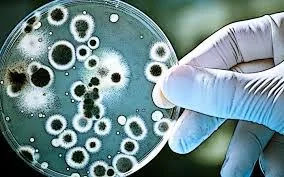The Benefits And Risks Of BioTechnology
{tocify} $title={ARTICLE INDEXING}
Mankind and biotechnology are almost the same age. The food you eat and the pets you love are all biotechnology. You can thank your predecessors thousands of years ago for starting the agricultural revolution, artificially sorting crops, raising cattle and other domesticated animals. When Edward Jenner invented the vaccine, or when Alexander Fleming invented the antibiotic, they used the power of biotechnology.
When agronomist Carl Ereki first coined the term “biotechnology” or “biotechnology” in 1919, he defined it as “the use of biotechnology to produce everything from raw materials to living things.” Using modern biotechnology, researchers are working to make the potential of living cells, plants and animals more beneficial to humans. And that’s why their DNA and proteins are being modified.
Biotechnologists do this by sequencing or reading the DNA found in nature and then modifying it by placing it inside a test tube or living cell. This innovative method of transforming DNA or proteins into living cells has recently been discovered.
In fact, the most remarkable advances in biotechnology in recent times have been in microscopic or even smaller scale inside cell membranes. From the mid-20th century onwards, biotechnologists continued to make groundbreaking discoveries and discoveries over the next few decades, after decades of basic research uncovered the chemical and genetic makeup of cells. Thanks to their hard work, powerful cellular tools have come into the hands of biotechnologists today.
In the coming decades, scientists will be able to use these tools of biotechnology to transform organisms in a more controlled way. And they can do everything from editing DNA in a more subtle way to synthesizing the whole genome from their basic chemical structural units. By modifying the cells, bomb-identifying plants, inventing drugs for cancer, and extinct hairy mammoths may be brought back.
And biotechnology may also be an important tool in tackling climate change. There has been a lot of concern about the risks of biotechnology for decades. However, recent advances in low-cost DNA sequencing, rapid gene synthesis, and fine genome editing suggest that biotechnology is becoming more effective.
How biotechnology is helping us
Satellite images of the Earth show how much the human race has changed the face of the earth. Forests have been degraded, with huge dams on rivers and artificial reservoirs, disrupting the normal flow of rivers. The construction of millions of miles of paved roads has also caused a lot of damage to the environment.
If we could also take satellite images of the microscopic world, we would be able to see what changes are taking place under the influence of biotechnology. Most of the food we eat every day comes from genetically engineered plants. They have been modified through ancient processes such as modern biotechnology or artificial selection, so that they can be cultivated with less nutrients without pesticides and adapt to climate change.
Many products, such as plastics, cosmetics, and fuels, now use organic ingredients in place of petroleum-based ingredients. Even your laundry detergent has biotechnology. Biotechnology has also been used in all your cotton fabrics.
However, perhaps the greatest application of biotechnology has been in the field of human health. At present, biotechnology has been applied in our lives since before our birth. Biotechnology is in vogue in everything from assisting in pregnancy to prenatal screening and home pregnancy testing.
Today, biotechnology has become a part of our lives since childhood through vaccination and application of antibiotics. As a result, our average life expectancy has increased a lot. Biotechnology also contributes to the remarkable cure for cancer and heart disease. And now biotechnology is being used in research into Alzheimer’s disease and anti-aging drugs. Many scientists now believe that biotechnology may be the safest way to treat hereditary diseases by editing DNA.
What are the risks of biotechnology?
In addition to the rapid advances in biotechnology research, many questions have been raised about its risks. Biotechnology is much more risky than any other branch of science. This is because germs are so small that they cannot be seen with the naked eye. But the risk of loss by them is huge.
This technology can cause a lot of unintentional damage. Below is an example.
In the 1930’s, Australian farmers faced an unprecedented problem. Insects were destroying their crops. To solve this problem, they brought in insect-hunting frogs. But when they stopped eating sugarcane, the frogs spread throughout Australia instead of eating the beetle, which is harmful to sugarcane, and began attacking all the beneficial small animals. From this we can get some idea about the risks of biotechnology.
But biotechnology has improved a lot since then and is working on many more subtle and sensitive things. As a result, the risks have become much more serious.


